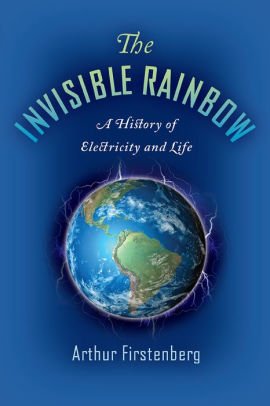The profound world of literature is often a mirror reflecting the complexities of our existence, and *The Invisible Rainbow* by Arthur Firstenberg is no exception. This compelling narrative delves into a topic that many are unaware of yet profoundly impacts modern life: the effects of electromagnetic radiation on both the environment and human health. The book is structured as an analytical exploration, meticulously combining scientific research with historical context and personal anecdotes. Readers embarking on this literary journey can expect a multifaceted examination of pervasive yet invisible forces that shape our contemporary reality.
As we traverse through the pages, the book opens with an engaging prologue that sets the stage for a deep dive into the enigmatic relationship between humanity and electromagnetic fields. The prologue is not merely an introductory note; it invites readers to ponder the significance of unseen phenomena that surround us continually. The author employs vivid imagery and persuasive language, captivating the audience from the outset. This section serves as the gateway into a realm where the unseen becomes the harshest of realities.
One of the most riveting components of *The Invisible Rainbow* is its historical backdrop. The narrative chronicles how humanity’s relationship with electricity has evolved over centuries. With an analytical lens, Firstenberg meticulously charts the timeline of electromagnetic discovery, from the pioneering days of Nikola Tesla to the ubiquitous modernity of wireless technology. Each chapter unfurls layers of this rich tapestry, revealing how technological advancements, heralded as triumphs, can have unforeseen consequences on our health and the environment. The meticulously detailed anecdotes evoke a sense of nostalgia intertwined with caution, as the narrative reminds readers that every technological boon carries potential peril.
A significant part of the book revolves around the multitude of health issues attributed to electromagnetic radiation—ranging from insomnia to more severe ailments. Firstenberg delves into the scientific studies that underpin these claims, ensuring that readers are not merely absorbing opinions but are equipped with well-researched data. This includes information on what is known as electromagnetic hypersensitivity (EHS), a term that encompasses various symptoms experienced by individuals who identify as sensitive to electromagnetic fields. By weaving together scientific evidence with personal testimonials, the author creates a compelling argument that encourages readers to reconsider their everyday interactions with technology.
In addition to historical and scientific insights, *The Invisible Rainbow* also confronts societal implications, presenting thought-provoking questions about consumerism, corporate responsibility, and the role of regulatory agencies. How often do we blindly accept advancements at the expense of our well-being? The book challenges readers to confront the dichotomy between progress and health, questioning whether society’s pursuit of convenience has overshadowed essential considerations regarding safety. This intellectually stimulating discourse serves as a catalyst for broader discussions about sustainability and public health.
The analytical writing in the book is interspersed with moments of narrative tension and personal connection. Firstenberg shares anecdotes from his life, recounting personal experiences that resonate deeply with the overarching themes of the book. Readers gain insight into his motivations, as he describes moments of epiphany that propelled him toward this extensive investigation. This blend of scientific rigor with personal storytelling elevates the reading experience, rendering it not just informative but also profoundly moving.
Furthermore, the book emphasizes the importance of awareness and education in navigating the complexities of modern technology. In a world increasingly dominated by screens and devices, *The Invisible Rainbow* serves as an essential guide to understanding the unseen challenges that come with technological dependency. It implores readers to take a more active role in safeguarding their health and the environment by making informed choices regarding technology use. The call to action is unmistakable: awareness can lead to empowerment.
Readers can also expect a plethora of actionable insights and practical advice peppered throughout the chapters. From suggestions on how to minimize exposure to electromagnetic radiation to recommendations for healthier lifestyle choices, Firstenberg does not merely highlight a problem; he empowers readers with tools to mitigate risks. His journey is as much about raising awareness as it is about providing solutions, making it a resource for those who seek to understand and navigate the complexities of their technological environment.
Moreover, *The Invisible Rainbow* culminates in a reflective tone, urging readers to contemplate their relationship with technology in the grand tapestry of life. As Firstenberg artfully draws connections between health, environment, and societal norms, it becomes clear that the issues presented are not isolated but rather interwoven into the very fabric of our daily experiences. This introspective conclusion invites readers to emerge from the text not just with knowledge but with a newfound consciousness regarding their choices and the broader implications on society.
In summary, *The Invisible Rainbow* is a thought-provoking exploration of the interplay between electromagnetic radiation and health. With a vibrant narrative style enveloped in analytical rigor, Firstenberg offers insights that resonate deeply with contemporary audiences. The book serves as a vital resource for anyone looking to deepen their understanding of the invisible forces at play in modern society. It awaits readers eager to engage with its themes and discover a profound examination that is both enlightening and imperative in today’s increasingly electrified world.
